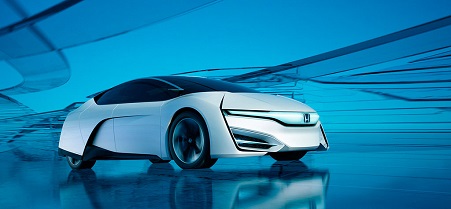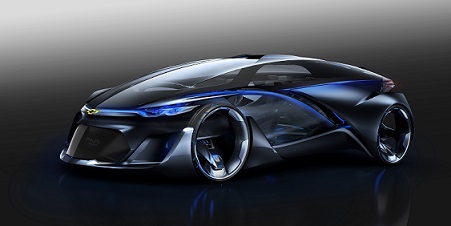BY JOHN WARNER, Chief Marketing Officer
EnerDel
www.enerdel.com
The only constant in life is change. We have heard it said hundreds of times, but it has turned out to be true time and again. Batteries are no exception to that rule; as the markets for electric applications continue to grow, the technologies that power them continue to evolve today and in the future. In my book, “The Handbook of Lithium-Ion Battery Pack Design” (2015), I wrap up with a discussion on some of the trends that will continue to drive battery development. Today, just over a year after publication, some of these trends are already beginning to emerge and some new ones are emerging.
In this article, I discuss two types of changes that are occurring in the battery world: evolutionary changes and revolutionary changes. Evolutionary changes are those that are continuous improvements to current technologies. These are changes that are highly likely and that we can expect to see within the next five years. However, revolutionary changes are those that offer major improvements and often diverge significantly from the current technologies. These are changes that are not likely to be commercialized for at least 10 years or more, if at all.
Evolutionary changes
From a technology perspective, the demand for power continues to increase; therefore, demands on the battery increase, which, in turn, drives us to continue to push the limits of these technologies. In other words, as vehicles continue to power more of their systems electrically and as more modes of transportation turn to electrification, demands on the battery will only grow. In fact, in a recent webinar, one research firm forecasts vehicle technology to largely transition to Energy Independent Vehicles (EIVs) by the mid-2030s and predicts the end of the internal combustion engine by about 2037. Higher energy density equates to longer range, more power equates to faster acceleration, greater energy volumetric energy density gives us smaller batteries, and greater gravimetric energy density gives us lighter batteries. And there are technologies in development today that move us in all of these directions — just not necessarily all in the same technology.
In addition to the technology drivers, there are some geopolitical drivers pushing these technology trends. One is the fact that the global population continues to grow from about 3 billion people in 1960 to more than 7 billion in 2014, and current forecasts show the world population reaching 8 to 10 billion by 2040–2050 (United Nations, 2014). This trend also has a secondary influence — location. All current forecasts predict that most of this growth will be in the world’s largest cities. This continuous population growth focused in these “mega-cities” will drive the demand for electric transportation, autonomous electric vehicles, personal transportation, and car sharing programs, all of which will mean that lithium-ion battery technology will need to continue to evolve in order to support these trends (Warner, 2015).
Today, I see continued movement toward higher energy density chemistries. Some companies that have historically used lower energy density lithium-iron phosphate (LFP) chemistries are beginning to transition to higher energy density lithium nickel manganese cobalt (NMC) chemistries. But the materials’ companies that manufacture these are also starting to introduce new formulations with greater nickel content to improve the energy density. There are some challenges that many cell manufacturers are still working to resolve, including electrolyte formulation and temperature performance. These are evolutionary changes to the current technologies that we will see in the market place over the next several years.
In addition to the cathode development, there is still a lot of work going on in the anode materials development. This is falling in a couple of areas, with the greatest area focus being the development of a silicon — or more accurately, a silicon-blended — anode. The past few years have shown us some dramatic improvements in cycle life, increasing from less than 100 cycles to some materials that manufacturers claim are able to achieve more than 1,000 cycles.
In addition to these trends, there is an overriding concern that is almost universal, and that is safety. Recent lithium-ion battery failures in Samsung smart phones and last year’s hoverboard fires have continued to bring battery safety to the forefront of the public’s mind. Battery manufacturers are working hard to improve their technologies to reduce the potential for safety-related failures. In some cases, some manufacturers are working to transition to non-flammable electrolytes, while others are moving toward the use of ceramic and other separators to offer improved safety.
The final evolutionary change that I will discuss is cost. The industry has seen costs come down at a very rapid pace over the past 10 years as more applications have begun integrating lithium-ion-based cells. With increasing volumes, we find that decreasing materials costs have a significant effect on costs. The same effect is true of the battery manufacturers, with commitments coming from major OEMs that it makes it much easier to drive costs lower. In the early days of the large-format lithium-ion batteries, virtually all manufacturers had to install capital because there were no manufacturing facilities in place. Today, nearly 10 years after the successful launch of vehicles like the Chevrolet Volt and Nissan Leaf, the costs of these factories are largely amortized. Finally, as energy densities have increased, the cost per watt-hour (Wh) continues to decrease. In fact, this last factor is one of the largest factors that impacts the cost per Wh and is mainly being achieved through the transition to higher nickel content cathodes, which drives the energy up.



Concept cars from Toyota, Honda, and Chevrolet will need new, and perhaps revolutionary, batteries.
Revolutionary changes
As I mentioned earlier, revolutionary changes are those that will take longer to develop into commercial viability and/ or may still be early in the development stage. In most of these cases, we will not see these in large volumes for close to 10 years for large applications such as vehicles. However, we may see some of these entering the market for consumer electronics much earlier as the usage profiles are generally much easier than in the automotive applications.
The first revolutionary technology is the emergence of solid-state batteries. The solid-state battery uses a solid electrolyte that is deposited over the cathode and then the anode is coated on top of that. The two big benefits here are energy density and safety. The solid-state battery has the potential to drive very high energy density into very small battery space. And the use of solid electrolytes means that there is no flammable material in the battery, so a thermal failure is, at the very least, extremely unlikely, if not impossible, to occur. However, at the current state of the technology, solid-state cells are limited to the mAh scale and are mainly applicable for very small applications. We will see this technology begin to take hold in places like medical devices and consumer electronics over the next five years. As the technology matures and larger cells become possible, we can envision a time when they begin to power vehicles and larger applications, but that is still more than a few years away.
Another developing technology trend which shows great promise is the lithium-sulfur batteries. Lithium-sulfur batteries have the potential to offer very low costs due to the sulfur in place of the high-cost nickel, cobalt, aluminum, and other rare earth metals used in current lithium-ion cells. In addition to the low cost, they may offer energy densities in the range of 500 Wh/kg. Current lithium-ion cells range from about 160 Wh/kg up to about 220 Wh/kg, with the maximum limit for current technologies expected to be about 300 Wh/kg. So it may very well be that lithium-sulfur cells will be the replacements for current lithium-ion batteries. However, as of today, there are only a handful of companies actively developing lithium-sulfur cells, and none are commercially available. As long as there are no major hurdles that occur, I would expect to see these cells beginning to emerge in product form in about five years and between five to 10 years becoming the new standard.
Conclusion
How far can the current technology take us? Well, that is still to be seen. But some scientists have pegged the current lithium-ion chemistries top-end energy density at somewhere near 300 Wh/kg. Some of these evolutionary changes may get us there in the next five to 10 years. In fact, we can see some cells in the low- to mid- 200 Wh/kg range today. So, 300 Wh/kg is not out of reach. But beyond that, we may need to depend on some of these more revolutionary technologies to pick up after that. I would expect to see solid-state batteries moving into the medical and consumer spaces over the next five years. In the large application space, I think the lithium-sulfur batteries could become the next major shift in technology, but that is likely still more than 10 years out.
But there are also some technologies that haven’t been looked at in a long time that are now beginning to re-emerge. One such technology is the Edison Battery. Thomas Edison patented a nickel-based battery back in 1901, which is being re-developed today for modern applications by several companies. And of course, there are a slew of other technologies out there that are under development in many universities and national laboratories around the world that I did not mention here. Perhaps one or more of these will move into position to be the next “new thing.”
Dr. John Warner is the Chief Marketing Officer for Indianapolis-based EnerDel and author of the book “The Handbook of Lithium-Ion Battery Pack Design” (2015). Dr. Warner has been in the battery industry for almost eight years with companies such as XALT Energy, Magna Steyr Battery Systems, and Boston-Power. Prior to that, Dr. Warner spent 18 years in the automotive industry, including 12 years with General Motors.
Advertisement





